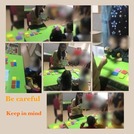
Dikkatli Olun Dikkatli Olun projemizin.
- Subject:
- Early Childhood Development
- Education
- Special Education
- Material Type:
- Activity/Lab
- Lesson Plan
- Primary Source
- Teaching/Learning Strategy
- Author:
- Sibel Koçyiğit
- Date Added:
- 06/22/2020
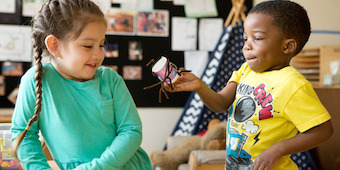

Dikkatli Olun Dikkatli Olun projemizin.
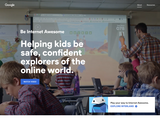
Teaches kids the fundamentals of digital citizenship and safety.
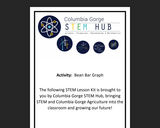
In this activity, kids will work on two fundamental early math skills – sorting/classifying, and graphing. There will also be some great fine motor skill practice! Includes place-based discussion questions, activity instructions, extension activities, songs, and student graph worksheets.
NGSS: K-LS1-1, 1-LS1-1, partially meets K-ESS3-1 (book and discussion)
Common Core: MP.4
Time: 45 minutes
Matierals: bag of dried beans ("16 bean soup"), paper bowls, glue, chart paper, the book "One Bean" or similar book about growing food plants, especially beans.

Children match pictures of the Moon on cards with matching pictures on a banner that shows the Moon phase cycle.

Accompanying resource to "Bear Shadow Activity." Children learn how the location of a light source changes how shadows appear.
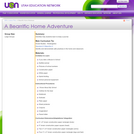
Activities help students learn to keep a journal.
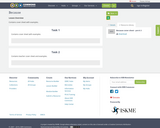
Contains cover sheet with examples.
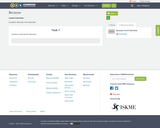
Contains: Because Tool Overview
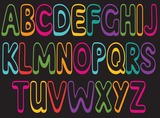
This is practice for students to match beginning sounds to pictures. They will practice identifying the beginning sound and then finding the matching letter.

Durch die aktuelle Situation in Europa – dem Angriffskrieg Russlands auf die Ukraine, die Vielzahl an flüchtenden Menschen und die daraus resultierende Aufnahme von Kindern aus Familien mit Fluchterfahrung – ist das Thema Krieg und Flucht erneut in hohem Maß präsent. Die hier zur Verfügung gestellte Auflistung bietet in dem Zusammenhang einen Überblick über bestehende Materialien zur Thematik für die Anregung einer inklusiven Pädagogik in Kindertageseinrichtungen.

Inklusion zielt auf das Ermöglichen von Bildungsgerechtigkeit und bedeutet Barrieren der Teilhabe abzubauen und Vielfalt wertzuschätzen. Die hier zur Verfügung gestellte Auflistung bietet in dem Zusammenhang einen Überblick über bestehende Materialien zur Thematik für die Anregung einer inklusiven Pädagogik in Kindertageseinrichtungen.

This curriculum builds upon many years of educating students in the garden and scales up content across grades and lessons for instructional scaffolding. It is designed as an interactive teaching tool to be co-taught with classroom teachers and garden instructors as leads. Each lesson connects directly to standards: Next Generation Science, Common Core State, Physical Education, and Environmental and Health Education. The concise and easy to-follow lessons are a packed 45 minutes for preschool through fifth grade. Flexibility is important, so some lessons include several activities that teachers can choose from to accommodate their lesson plans. Consistency is also important, so lessons follow themes and structures found in the Curriculum Map. 360 pages.
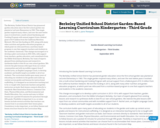
The Berkeley Unified School District has pioneered garden education since the first school garden was planted at LeConte Elementary in 1983. This single garden inspired many others, and over the next twelve years it evolved into a multi-school Gardening and Cooking Program with annual support from a federal grant of $1.9 million from the California Nutrition Network. We lost this funding in 2013, along with many other nutrition and garden education programs, at which point we refocused from a nutrition-based program to one that supports teachers and students in the academic classroom.
This change encouraged us to develop a pilot curriculum in 2013–1014, with support from teachers, garden educators, and consultants from the Edible Schoolyard, Berkeley. Our team of experts gleaned from existing lessons and research to synthesize drafts to best fit our own school gardens. We rewrote the pilot lessons with input from our school communities and with incredible support from P. Rachel Levin, an English Language Coach, to develop academic and health targets accessible to all of our students.
The curriculum builds upon many years of educating our students in the garden and scales up content across grades and lessons for instructional scaffolding. It is designed as an interactive teaching tool to be co-taught with classroom teachers and garden instructors as leads. Each lesson connects directly to standards: Next Generation Science, Common Core State, Physical Education, and Environmental and Health Education. Our concise and easy-to-follow lessons are a packed 45 minutes for preschool through fifth grade. Flexibility is important to us, so some lessons include several activities that teachers can choose from to accommodate their lesson plans. Consistency is also important, so we follow themes and lesson structure found in the Curriculum Map.
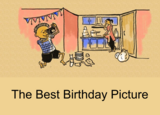
This work, “The Best Birthday Picture” is a derivative of “The Birthday Party" authored by Storyweaver, Pratham Books, Illustrated by Megha Vishwanath, used under CC-BY-4.0. The text for this adapted story “The Best Birthday Picture” was written by a team of educators during a short course on “Application of Open Educational Resources” in May 2022. The course was developed and delivered by the USAID LAC Reads Capacity Program and hosted by the University of the West Indies, Jamaica.
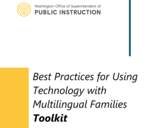
This toolkit is designed to help Local Educational Agencies (LEAs) create and maintain effective strategies with multilingual families. We explore and model best practices for the use of technology in teaching, as well as for assessing and communicating with diverse adults. The following guide is applicable for face-to-face, blended, and online instruction, and can also serve as a toolkit.
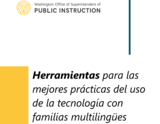
Este conjunto de herramientas está diseñado para ayudar a las Agencias Educativas
Locales (LEA, por sus siglas en inglés) a crear y mantener estrategias efectivas con las
familias multilingües. Exploramos y modelamos las mejores prácticas para el uso de la
tecnología en la enseñanza, así como para evaluar y comunicarnos con adultos diversos.
La siguiente guía es aplicable para la instrucción presencial, combinada y en línea, y
también puede servir como un conjunto de herramientas para tal efecto.
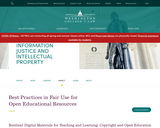
As educators begin to develop OER, one component of that process is navigating concerns around copyright when finding digital teaching materials. This webinar series addresses that and is divided into two tracks: K-12 and Higher Education. There are also two stand-alone webinar options that can be attended by both the K-12 and Higher Education community. All of the webinars will also be available on YouTube and linked to this page after the live event has ended.
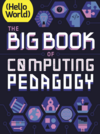
This special edition focuses on practical approaches to teaching computing in the classroom, and includes some of our favourite pedagogically themed articles from previous issues of Hello World, as well as a few never-seen-before pieces. It is structured around twelve pedagogical principles, first developed by us as part of our work related to the National Centre for Computing Education in England. These twelve principles are based on up-to-date research around the best ways of approaching the teaching and learning of computing.

(EDIT - please describe this resource, including the overall goals and audience. Please include any attribution, such as attribution for images and videos used that are openly licensed. Fill in more information in the sections below to clearly describe, license, and align your resource so others can easily understand what it is.) Image in Title is by Florida_Aaron - https://pixabay.com/users/florida_aaron-3954368/
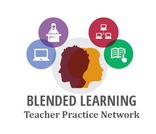
In this online learning module, you will: 1: Understand blended learning models2: Learn to design blended learning experiences